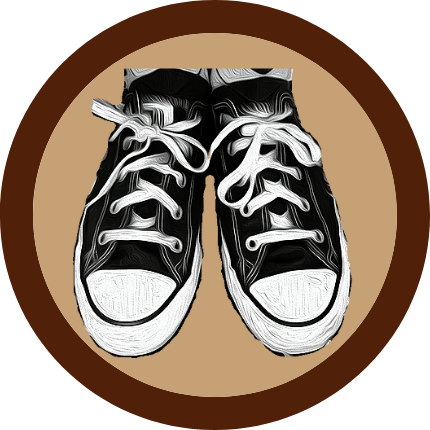New Year, You Now
A couple of months ago, a friend texted me a photo of her ten-year-old daughter’s sticky note. Scrawled across it were the words “The Old Me,” with a line drawn through them.
The sticky note itself? A design from my company, one meant for imagining transformative conditions for learning. Seeing it repurposed this way made me laugh out loud—first at the humor and then at the depth.
Photo credit: Erin Bray
The sticky note itself? A design from my company, one meant for imagining transformative conditions for learning. Seeing it repurposed this way made me laugh out loud—first at the humor and then at the depth.
A Multiplicity of Old Me’s
When I received this photo, we were nearing the end of the calendar year, a natural time for reflection and transition, when we think about what we’ll leave behind and what we want to carry forward. “The Old Me” resonated deeply, but perhaps not in the way the sticky note intended. It stirred something more profound—a reckoning with the many “old me’s” I’ve shed over the years, versions of myself that no longer exist because I’ve outgrown them.
This idea of “the old me” often comes into sharp focus as we age. Maybe my friend’s ten-year-old was experiencing a version of the same insight I was having. With my birthday coming up, I’ve been realizing that shedding old versions of ourselves is an act of aging, too—of stepping into a future that is both unwritten and inevitable.
Imagining what’s next is where I thrive. I often find myself encouraging others—and myself—to design futures that feel transformative and filled with possibility. But that sticky note, crossed out in (possibly) playful defiance, reminded me that sometimes transformation isn’t about what’s next. Sometimes, being present is transformative enough—sitting with all parts of yourself in this very moment, accepting what is, whether it’s the parts you want to shed or those that provoke anxiety. The past me carries nostalgia and, at times, regret. The future me holds anticipation—or anxiety. But the me who’s shaping this moment can often feel the hardest to confront. Our present selves are complex, as present moments themselves are complex.
New Year, You Now
What rituals do we have to celebrate the “now” of us, this version that exists in the fleeting present?
Presence invites a unique kind of transformation. It’s quieter than the big changes we plan or the futures we imagine. It’s found in the small, intentional ways we notice what is—in pausing to breathe, to feel, to see ourselves and others as we are in all our “right nows,” rather than our “wish we coulds” or “if onlys.”
So here’s your invitation to pause and focus on who we are today.
Who is the “you” you love and accept right now?
Who is the “you” you’re still getting to know, still learning to embrace?
How might this moment—this presence of the present—be the most meaningful gift you give yourself this year?
May we let go of what we’ve shed, trust in what we’ll become, and make space to be present with who we are right now—between nostalgia and anticipation, regret and anxiety. Sometimes, full presence itself is the most transformative thing we can do.

